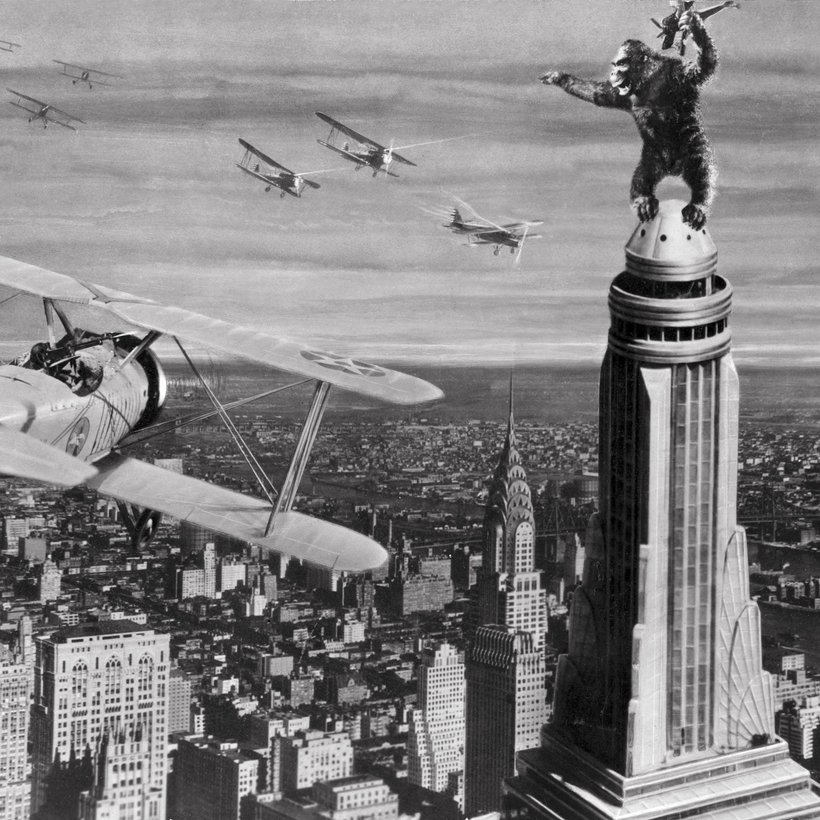“New York is not just a city. It’s The City.... Los Angeles is the city of angels and the city of dreams, but it will never be The City. New York knows it. Los Angeles knows it. And the entertainment industry knows it,” writes New York magazine’s Matt Zoller Seitz in his foreword to Fun City Cinema: New York City and the Movies That Made It, an impressive new book by the film critic, historian, and Bronx resident Jason Bailey.
It’s true that New York is the one city whose identity is inextricably linked to its cinema, but what came first, The City or the movies?

Bailey realized he had a book on his hands after discovering that one of the first executive actions taken by New York City mayor (and wannabe actor) John Lindsay after assuming office in 1966 was to form the Mayor’s Office of Film, Theatre & Broadcasting—“a one-stop shop intended to eliminate the red tape and copious permits of NY filmmaking.” The naïvely P.R.-minded aim was to boost tourism by showing off his “Fun City,” as Lindsay called it—a moniker which was initially embraced before being re-purposed ironically by residents as the 60s wound down and urban dysfunction went up.
“When the difficulties of shooting in New York decreased, the dialogue between real New York and reel New York somehow grew, by sheer coincidence of timing, more tense and contentious,” writes Bailey. “The explosion of production that followed [the Mayor’s Office of Film’s] establishment in the mid-1960s coincided directly with the most troubled period of the city’s history, a quarter-century beset by rising crime, increasing debt, decreases in public service and servants, and general urban anarchy.”

The grim pictures that followed, such as 1971’s The French Connection, were equal parts gritty documentary of urban decay and outrageous Hollywood fearmongering hyperbole—either way, certainly not the cinematic postcards Lindsay had hoped for.
Bailey charts the last 100 or so years by focusing on one film per decade, beginning in the Roaring 20s with The Jazz Singer (1927), a technological watershed as the first talkie, “informed … by the explosion of mass culture in New York City in the 1920s (an environment in which it felt like anyone could reasonably become a star).” Six years later sees the spectacle of King Kong (1933), released amid the Great Depression, with the titular monster’s terrifying climb to the top of the then recently constructed Empire State Building, a visceral metaphor for the existentially trying times.

Post–W.W. II, Jules Dassin’s noir The Naked City (1948) was one of the first narrative features to shoot the city and its inhabitants with a documentary-esque verisimilitude, still a through line of New York filmmaking today.
But it’s the terrifically acrid Sweet Smell of Success (1957) that was “one of the first films that really [seemed] to live in New York City, and to understand its distinctive landscape: the nightclubs, the restaurants, the open-air newsstands and hot dog joints, the wet streets.”
The only X-rated movie to win the best-picture Oscar, Midnight Cowboy (1969) was precisely the type of controversial and seedy depiction of the city John Lindsay wasn’t expecting to come from his Mayor’s Office permit reform. Martin Scorsese’s Taxi Driver (1976) epitomized the even bleaker post-Vietnam, post-Watergate 70s disillusionment and ambient violence that was fermenting in the city.

Oliver Stone’s Wall Street (1987) is the defining articulation of the President Reagan and Mayor Koch era, when New York was “two cities”—one the epicenter of financialization and concentrated capital, the other a destitute hellscape beaten down by decades of austerity. Bailey follows with Larry Clark’s provocative Kids (1995) as “one last Polaroid picture of a vanishing city”—adrift with AIDS anxiety and trauma and Mayor Giuliani’s implementation of the “broken windows” school of policing (infamously criminalizing even jaywalking).
Bailey’s choices for the past two decades aren’t quite as inspired, though the task is admittedly far more difficult. While Spike Lee’s The 25th Hour (2002) is a great flick and a powerful depiction of 9/11’s aftermath, it’s hard not to note what a precipitous drop-off in lasting cultural legacy there is compared with the previous eight movies.
Closing out with a focus on Noah Baumbach’s Frances Ha (2012) feels like an anticlimactic consolation prize of sorts for not having dedicated a chapter to Woody Allen’s Manhattan (1979)—though Bailey does make a good case for Frances Ha in its message of how impossibly unaffordable the city has become and how ubiquitous housing precarity is for anyone not working in finance.

With New York now so hyper-gentrified and prohibitively expensive, Bailey’s epilogue is melancholic and poignant, expressing “a legitimate fear of losing what E. B. White called ‘the unexpungeable odor of the long past, so that no matter where you sit in New York you feel the vibrations of great times and tall deeds, of queer people and events and undertakings.’ That odor—sometimes, admittedly, a literal one—grows fainter by the day.”
Bailey pays tribute to the city’s old, storied, vanished institutions (such as my beloved Mars Bar, now a TD Bank), before ending in grateful reverence for the permanence of cinema. “The myopic but seemingly inexorable march of ‘progress’ may have eradicated the New York City of old,” he writes. “Yet it lives on in the movies. In the movies, that New York City will live forever.”
Spike Carter is a writer and filmmaker. Listen to his playlist inspired by this book in this week’s Air Play


